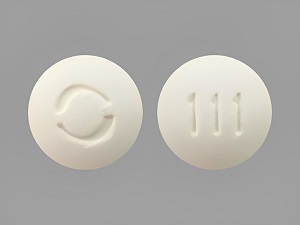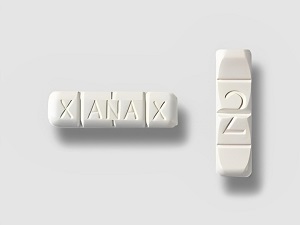When it comes to pain relief, tramadol tablets often find their place in the discussion. Buy Tramadol online is a medication used to manage moderate to moderately severe pain. In this blog, we’ll delve into whether tramadol tablets are an effective way to solve pain relief treatment.
Understanding Tramadol
Tramadol is a synthetic opioid analgesic that works by binding to opioid receptors in the brain and spinal cord. It also inhibits the reuptake of certain neurotransmitters, such as serotonin and norepinephrine, which play roles in pain perception. This dual mechanism of action contributes to tramadol’s pain-relieving effects.
Effectiveness in Pain Relief
- Moderate to Moderately Severe Pain: Tramadol is often prescribed for pain conditions that fall within the moderate to moderately severe range. This includes conditions like post-operative pain, musculoskeletal pain, neuropathic pain, and certain chronic pain conditions.
- Quick Onset of Action: Tramadol is known for its relatively quick onset of action, typically providing pain relief within 30 to 60 minutes after ingestion. This makes it suitable for managing acute pain episodes.
- Extended-Release Formulations: Extended-release tramadol formulations are available, providing sustained pain relief over a longer duration. This can be beneficial for individuals requiring around-the-clock pain relief.
- Broad Spectrum of Action: Tramadol is effective in treating various types of pain, including nociceptive pain (caused by tissue damage or inflammation) and neuropathic pain (caused by nerve damage or dysfunction).
- Combination Therapy: Tramadol can be used alone or in combination with other pain medications, such as nonsteroidal anti-inflammatory drugs (NSAIDs) or acetaminophen, to enhance pain relief synergistically.
Side effects of tramadol tablet
Here we mention the side effect to buy tramadol online in the following way:-
- Nausea and Vomiting: Common side effects, especially when starting tramadol or with higher doses.
- Dizziness and Drowsiness: Can impair cognitive function and motor skills, affecting activities like driving.
- Constipation: Slows down bowel movements, requiring dietary adjustments or medication.
- Headache: Occurs in some individuals as a side effect of tramadol.
- Dry Mouth: Sensation of dryness in the mouth, often accompanied by thirst.
- Sweating: Increased sweating or perspiration is a possible side effect.
- Respiratory Depression: Rare but serious, especially with high doses or in susceptible individuals.
- Withdrawal Symptoms: Including anxiety, insomnia, tremors, and flu-like symptoms upon discontinuation.
- Serotonin Syndrome: Rare but severe reaction when combined with certain medications, leading to agitation, confusion, rapid heart rate, and high blood pressure.
Positive points regarding tablet
While considering the Tramadol tablet that offers a several positive points:-
- Effective Pain Relief: Tramadol is potent in managing moderate to moderately severe pain, including acute and chronic conditions.
- Dual Action: It works through opioid receptors and inhibits neurotransmitter reuptake, providing comprehensive pain relief.
- Quick Onset: Rapid onset of action within 30-60 minutes makes it suitable for acute pain episodes.
- Extended-Release Formulations: Extended-release versions provide sustained pain relief for longer durations, reducing dosing frequency.
- Lower Risk of Respiratory Depression: Compared to other opioids, tramadol has a lower risk of respiratory depression, making it safer for certain patients.
- Flexible Administration: Available in various forms for oral administration, offering convenience and individualized dosing.
Doses of tramadol tablet
The dosage of tramadol tablets depends on several factors, including the severity of pain, individual response, and medical history. Here are general guidelines:-
- Immediate-Release Tablets: Typically, the initial dose is 50-100 mg every 4-6 hours as needed for pain relief. The maximum daily dose is usually 400 mg.
- Extended-Release Formulations: Initial doses range from 100-300 mg once daily, with adjustments based on response and tolerance. The maximum daily dose is usually 300 mg.
- Titration: Dosage adjustments should be gradual, based on pain intensity and side effects, to find the lowest effective dose.
- Special Populations: Older adults and those with liver or kidney impairment may require lower doses and careful monitoring.
Considerations and Precautions
While tramadol can be effective in pain management, there are several considerations and precautions to keep in mind:-
- Potential for Dependence: Tramadol is an opioid medication and carries a risk of dependence, tolerance, and withdrawal symptoms with prolonged use. It should be used exactly as prescribed and not stopped abruptly to avoid withdrawal effects.
- Side Effects: Common side effects of tramadol may include nausea, dizziness, drowsiness, constipation, and headache. These side effects are usually mild to moderate and can often be managed or minimized with proper medication use and lifestyle adjustments.
- Drug Interactions: Tramadol can interact with other medications, such as certain antidepressants, antipsychotics, and other opioids, potentially increasing the risk of side effects or reducing the drug’s effectiveness. It’s essential to inform your healthcare provider about all medications you are taking before starting tramadol.
- Respiratory Depression: Like other opioids, tramadol can cause respiratory depression, especially at higher doses or when combined with other respiratory depressants such as alcohol or benzodiazepines. Caution should be exercised, particularly in individuals with respiratory conditions or compromised respiratory function.
- Special Populations: Tramadol dosing may need adjustments in special populations, such as older adults, individuals with liver or kidney impairment, and those with certain medical conditions. Close monitoring is necessary to ensure safe and effective use.
Treatment Guidelines and Monitoring
Healthcare providers follow specific guidelines when prescribing tramadol for pain relief:-
- Patient Assessment: A comprehensive assessment of the patient’s pain condition, medical history, current medications, and risk factors is conducted to determine the appropriateness of tramadol therapy.
- Individualized Dosage: Tramadol dosage is tailored to each patient based on factors such as pain severity, response to previous pain medications, tolerance to opioids, and overall health status. Starting with the lowest effective dose and titrating slowly can minimize risks.
- Regular Monitoring: Patients prescribed tramadol for pain relief are regularly monitored by their healthcare provider to assess treatment response, manage side effects, evaluate the need for dose adjustments, and monitor for signs of dependence or misuse.
- Pain Management Plan: Tramadol is often part of a comprehensive pain management plan that may include non-pharmacological approaches (such as physical therapy, exercise, and cognitive-behavioral therapy) and other medications as needed to optimize pain control and improve quality of life.
What Other Treatments for pain relief ?
Pain relief encompasses a range of treatments beyond medication:-
- Physical Therapy: Exercises, stretches, and techniques to improve mobility and reduce pain.
- Acupuncture: Traditional Chinese practice involving thin needles inserted at specific points to alleviate pain.
- Massage Therapy: Manipulation of muscles and tissues to reduce tension and promote relaxation.
- Chiropractic Care: Spinal adjustments and manipulations to relieve pain, especially in musculoskeletal conditions.
- Mind-Body Techniques: Meditation, yoga, and relaxation techniques to manage pain perception and stress.
- Nerve Blocks: Injections to block nerve signals transmitting pain.
- Surgery: For severe cases or when other treatments are ineffective, surgical interventions may be necessary.
Choosing the right approach depends on the type and severity of pain, individual health factors, and preferences. Collaborating with healthcare professionals can lead to a comprehensive pain management plan.
Who can avoid the tramadol tablet ?
Tramadol tablets are effective pain relievers but may not be suitable for everyone. Individuals with certain conditions or characteristics should avoid tramadol:-
- History of Substance Abuse: Those with a history of substance abuse or addiction to opioids should avoid tramadol due to the risk of dependence and misuse.
- Respiratory Conditions: Individuals with respiratory conditions like asthma or chronic obstructive pulmonary disease (COPD) should avoid tramadol as it can cause respiratory depression.
- Liver or Kidney Impairment: Tramadol is metabolized in the liver and excreted by the kidneys. Patients with severe liver or kidney impairment should avoid tramadol or use it with caution under medical supervision.
- Pregnancy and Breastfeeding: Tramadol is not recommended during pregnancy, especially in the first trimester, and should be avoided while breastfeeding due to potential risks to the baby.
- History of Seizures: Tramadol can lower the seizure threshold, so individuals with a history of seizures or epilepsy should avoid it or use it with caution under medical supervision.
Conclusion
Buy Tramadol online that can be an effective option for managing moderate to moderately severe pain when used appropriately under medical supervision. However, it is essential to weigh the benefits against the potential risks and adhere to treatment guidelines to ensure safe and effective pain relief. By understanding tramadol’s mechanism of action, effectiveness, precautions, and monitoring considerations, healthcare providers and patients can make informed decisions regarding pain management strategies.











Leave a comment